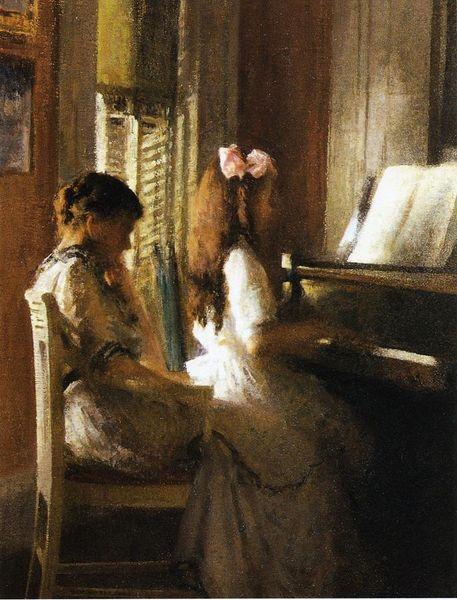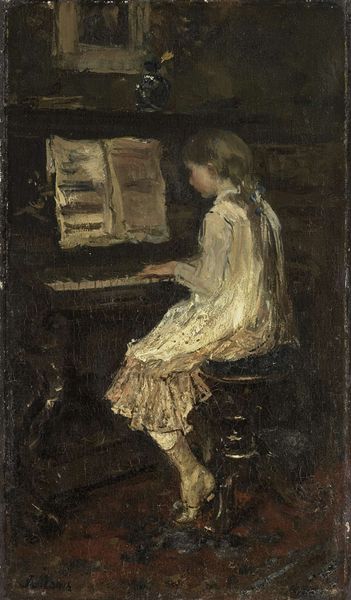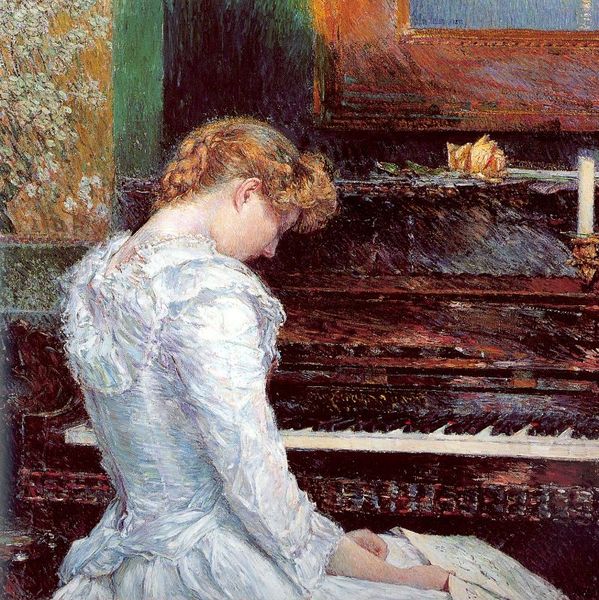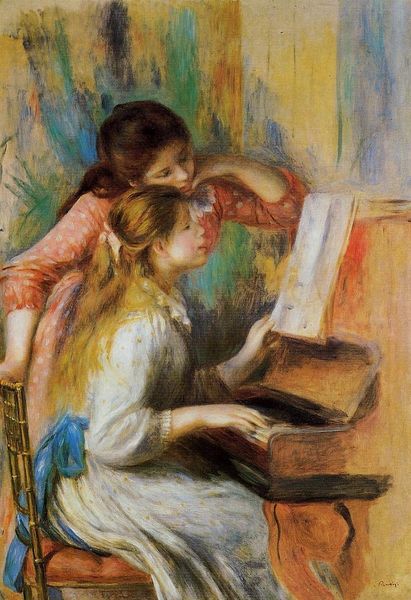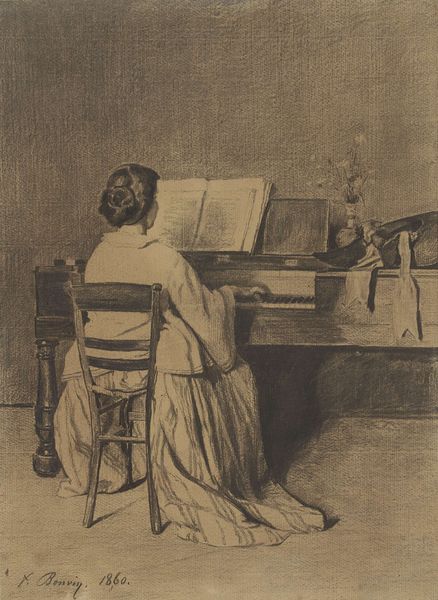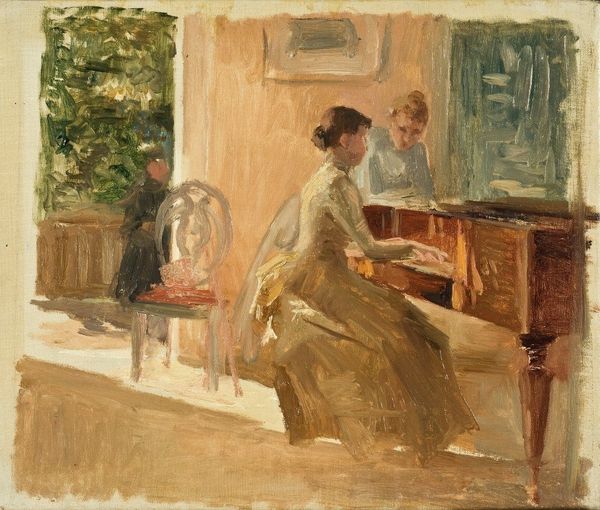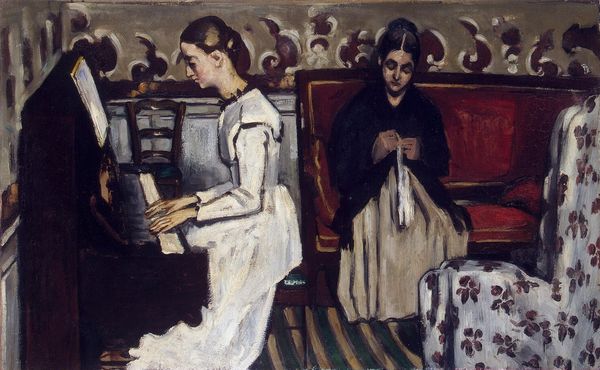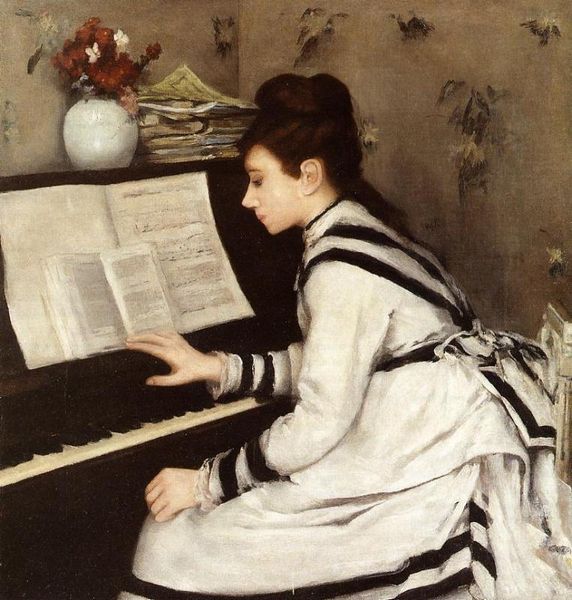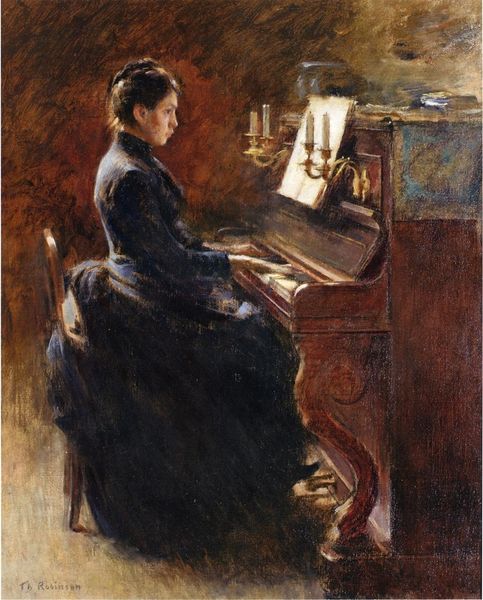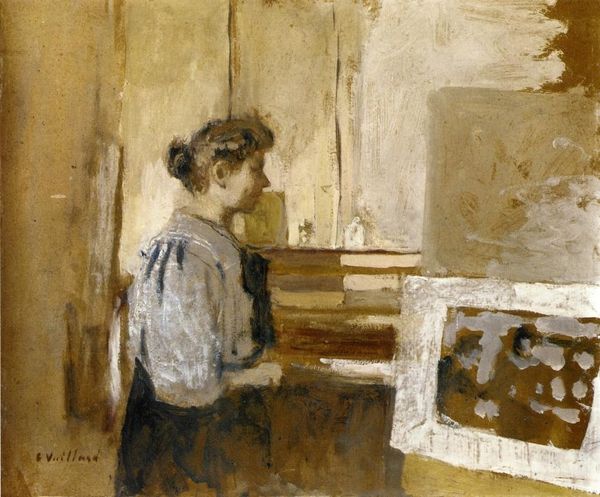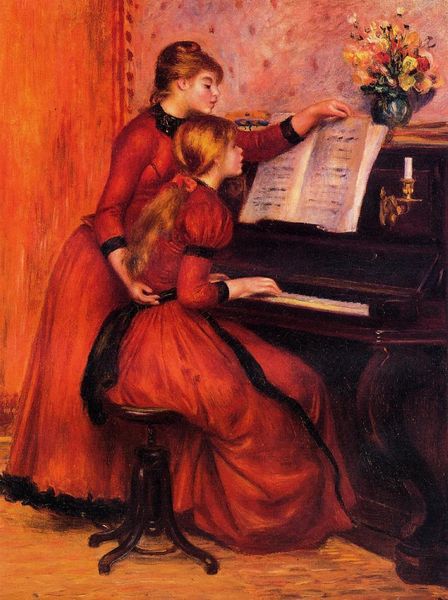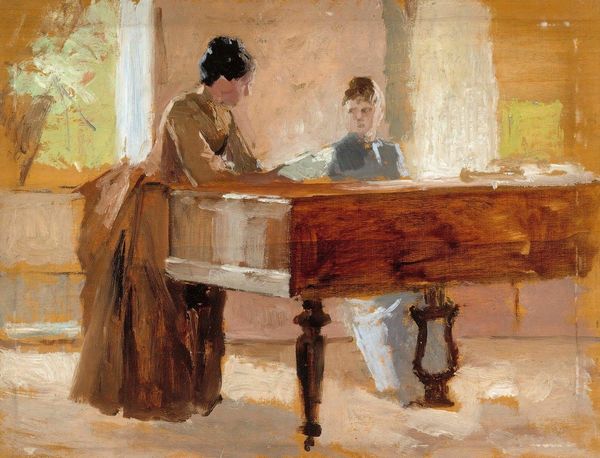
painting, oil-paint
#
portrait
#
painting
#
impressionism
#
oil-paint
#
oil painting
#
genre-painting
Dimensions: 65.9 x 47.3 cm
Copyright: Public domain
Curator: Chase’s “Mrs. Meigs at the Piano Organ," painted in 1883, captures a scene of domestic leisure with oil on canvas. What are your first impressions? Editor: The muted palette creates a remarkably serene atmosphere. I'm drawn to the figure’s almost ethereal quality against the heavy, dark wood of the organ. Curator: Yes, the contrast is key. Mrs. Meigs is positioned with her back to us. How do you interpret the anonymity? How can the gender roles play into your interpretations? Editor: It prompts a lot of questions. Is it meant to generalize the experience of women within the domestic sphere, especially regarding education and accomplishment in the arts? The positioning seems purposeful in emphasizing the confinement women were subject to in 19th-century social mores and expectations, even in past-times. The absence of a face suggests an erasure of the self through a patriarchal framework. Curator: And that framework strongly dictated acceptable public and private personas for upper-class women. The image can be viewed through the lens of women, such as Mrs. Meigs, performing, quite literally, and how that translates to contemporary societal contexts of display in digital environments. The instrument she plays also speaks to those societal pressures and roles of expression within them. Editor: The presence of musical notation speaks to how accomplishments may often translate into cultural and artistic productivity, yet, so often there were not any institutional opportunities available for these populations of talented people. She embodies a tradition both artistic and cultural. Do you think the deliberate softness in Chase’s brushstrokes amplify the emotional narrative within this scene? Curator: It absolutely contributes to a reading that goes beyond straightforward depiction of wealth and leisure. Chase captured something nuanced here about the private lives and possibilities of women like Mrs. Meigs within their domestic space. The historical moment is held with emotion and dignity. Editor: Yes. In revisiting Chase’s "Mrs. Meigs", the layers of socio-political dynamics are evident in the soft application of pigment, creating depth, emotion, and so much that connects history and now. Curator: Indeed, bringing attention to our own moment as we interpret works that inform both contemporary experience and artistic expressions.
Comments
No comments
Be the first to comment and join the conversation on the ultimate creative platform.
